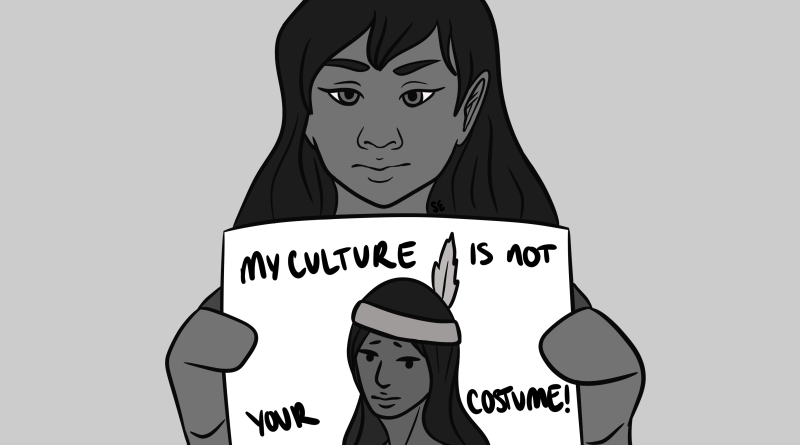Halloween costume rules to live by
Halloween costumes that may seem offensive or appropriate someone’s culture.
With another Halloween in the books, there is a discussion that needs to be had. Now, it’s a conversation that has been had every year for what seems forever. The ol’ costume v. offensive conversation.
Every year, I get so excited for the spooky season with the pumpkins, the scary decorations, the scary movies and the costumes. What is not to love about Halloween? Well, that is until the costumes make their debut. From “sexy Indian princess” to “Holocaust survivor,” there is an array of offensive costumes that have been worn in years past.
Cultural appropriation is a big issue when it comes to Halloween costumes. Many people’s cultural dress has many significant meanings and purposes in their culture. For example, Indigenous people’s headdresses are not only not representative of all Indigenous tribes’ cultures, but they are something earned in war. The use of a headdress for a costume is disrespectful since the one wearing it hasn’t earned it, nor are they Indigenous most of the time.
Romani culture is also often used for costume. The infamous “fortune teller” is a horrible representation of Romani culture and it ignores the fact that Romani people were persecuted for years for their culture.
Another popular costume idea that has gained more traction in recent years is serial killers. With the recent release of “Dahmer” starring Evan Peters, many may be planning to dress up as the psychotic serial killer. It’s important to remember that this was a real person who inflicted pain and violence upon many. That being said, it’s probably better to go as Chucky instead.
In addition to cultural appropriation and real serial killers, many “costumes” promote racist ideals and/or sexualize specific groups. This includes costumes involving blackface or even dressing as a Holocaust victim. Yes, these are costumes that have actually been used for Halloween.
These costumes are very insensitive to the victims of these tragedies and the history of oppression that has followed many people. Holocaust victims spent years living in fear of being killed simply for being. The events that occurred in Germany were tragic and making a costume of this is not only insensitive, but it makes the Holocaust and its victims seem like a myth instead of a dark part of history.
Blackface is a whole separate issue when it comes to Halloween costumes. Black face has a very dark history, often promoting untrue stereotypes of African-American people and their culture and even slavery. Dressing up in blackface is not only upholding the racist views many had towards African-American people, but it also diminishes the experience many African-American people have had.
Transphobia is also an annual issue that those part of the LGBTQ+ community face every year. In a Teen Vogue article from 2016, Walmart had released a costume named “tranny granny,” which is very plainly transphobic and harmful to the transgender community. Transgender people have been targeted for years for not conforming to society’s gender role standards. Their identity is not a costume or some way to get a quick laugh.
Simply put, your Halloween costume should be just that: A Halloween costume. It shouldn’t be someone’s culture, race, transphobic, sexist, or someone’s traumatic experience.
Here are some questions to ask yourself when deciding if your costume is potentially cultural appropriation or offensive:
- Does your costume use elements of someone else’s culture? (e.g. cultural dress)
- Is your costume racist towards a particular group?
- Does it promote violence or traumatic events?
- Does it sexualize a particular group?
- Does it promote body-shaming?



